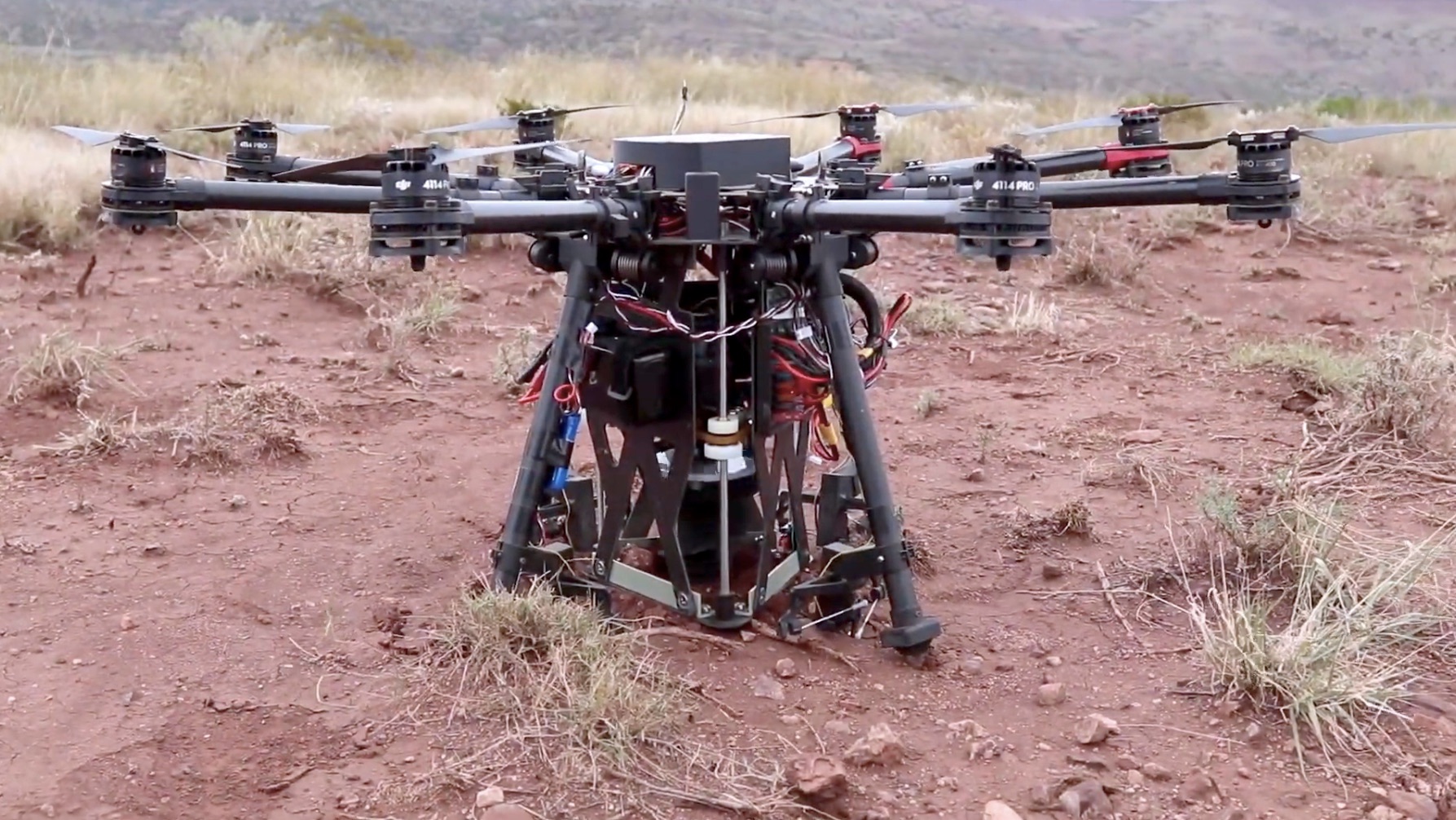
The NIMBUS Lab at the University of Nebraska has been developing drones that have the unique ability to dig holes in the ground and then fill those holes with sensors. If this sounds like a complicated task, that’s because it is: The drone needs to be able to carry a portable digging system a useful distance, locate a diggable spot, land, verify that the spot it thought was diggable is in fact diggable, dig a hole and install the sensor, and then fly off again.
At IROS late last year, folks from the NIMBUS Lab presented a paper detailing a rather burly quadcopter that could carry an auger with an embedded sensor and use it to place the sensor in the ground (you can see a video of this in action here). And at ISER a few weeks later, they presented another paper on how the drone can autonomously figure out whether it’s digging in a good spot or not.
One of the biggest challenges to a system like this is that by the time you pack in the drilling rig and all the sensors and computers that the drone needs to operate autonomously, you’ll be lucky if the thing will manage to keep itself aloft for more than just a few minutes. This is not particularly useful, since the whole point is to send the drone out to place sensors in areas that you can’t easily get to yourself. What’s needed is a way of extending the drone’s range, and the NIMBUS Lab came up with one: A helicarrier, a parachute, and one of the most bizarrely effective drone deployment systems I’ve ever seen.
For more details, we spoke with the principal investigator on this project, NIMBUS Lab co-director Carrick Detweiler, via email.
Read the full article and interview at: https://go.unl.edu/dgb0